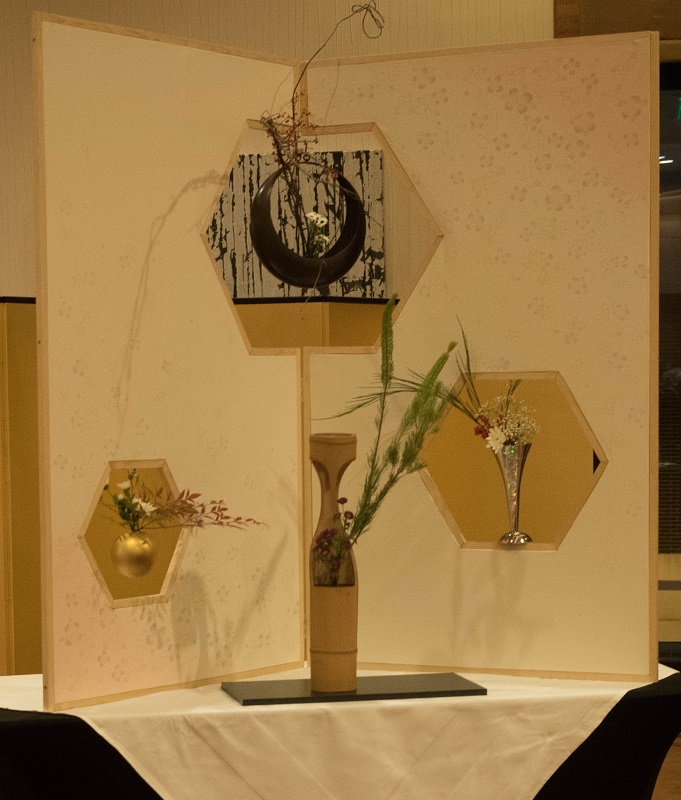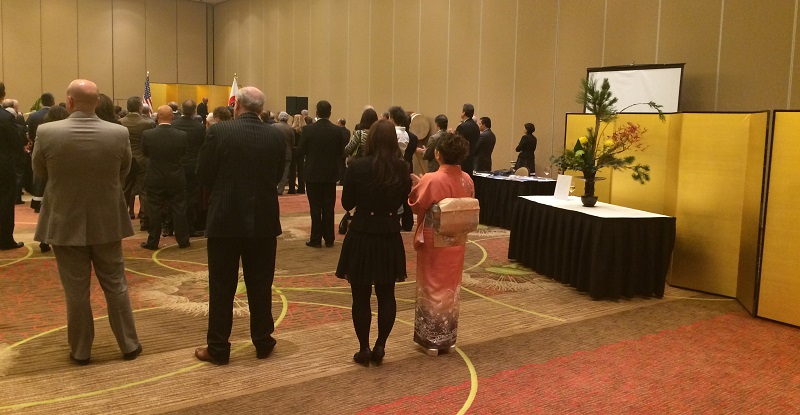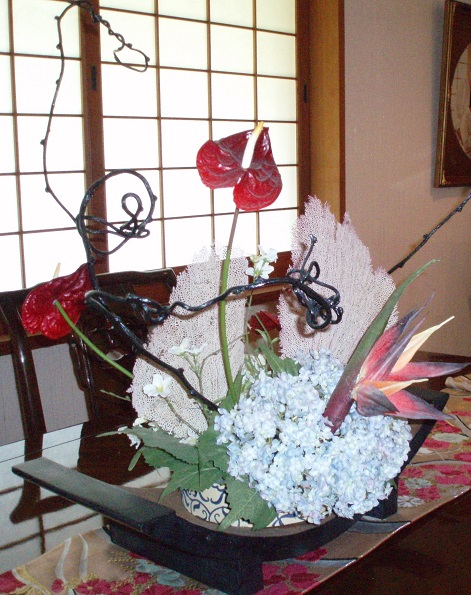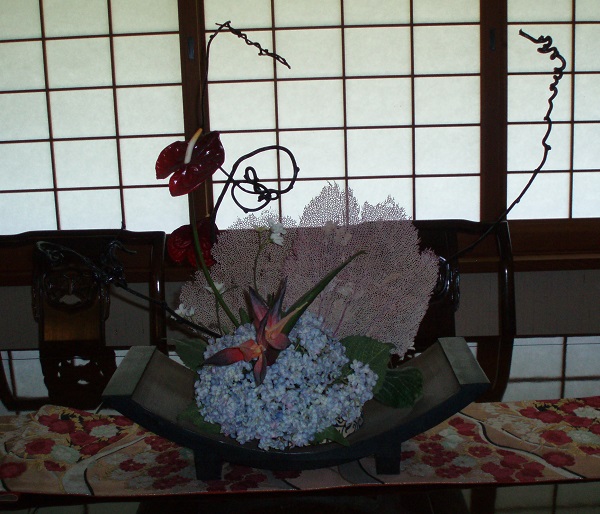Every 3 years, I am asked to present my flower arrangement at the annual Consulate General of Japan Year-end party. My turn had once again came this year.
I wanted to showcase a “Tsuri-Bana” using Mangetsu (Full moon) container.
It is a simple (Wabi Sabi) arrangement.
But, the size is small, and I have to have something to hang the Mangetsu container.
So, I decided to make a Byoubu (paper-screen room devider) Japanese screen with windows.
I had brought Japanese Fusuma paper with flower patterns from Japan, with which I made the two-fold Japanese Byoubu. It took about a week to make this byoubu from scratch.
The windows are shaped in hexagonal shapes, indicating Ikenobo’s Rokkaku-do Temple in Kyoto, Japan, the originating place of Japan’s Ikebana flower arrangement more than 550 years ago in 1460’s.
Because Mangetsu container is made of copper, I wanted to use a gold-colored container and a silver-colored container to complete Gold, Silver and Copper theme.



